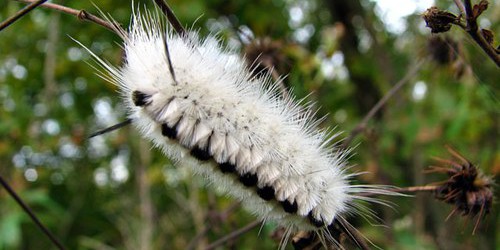White Hickory Tussock Moth Caterpillars Are Poisonous-Truth!
Summary of eRumor:
Posts on social media sites warn that White Hickory Tussock Moth Caterpillars are poisonous and can cause skin irritation or more serious health complications when touched by humans.
The Truth:
Experts say that White Hickory Tussock Moth Caterpillars are both poisonous and allergenic, but most people who encounter them experience mild symptoms, like itchy skin or a rash.
The White Hickory Tussock Moth Caterpillar’s longer white lashes are connected to poison glands inside the caterpillar’s body. These hollow lashes enable a chemical to be piped into a “poker” that makes touching them an itchy experience, the University of Wisconsin-Milwaukee reports.
Those who experience skin irritation after touching a White Hickory Tussock Moth Caterpillar should wash the sting with soap and water and dab the area with ammonia or calamine lotion. More serious side effects from the toxic chemical can result in swelling and nausea. Researchers speculate that White Hickory Tussock Moth Caterpillars either ingest toxic chemicals from the leaves they eat, or create the chemical “in house,” or in their own body. In general, it’s a good idea to stay away from animals or insects that have bright colors or assume “look at me postures” because it often indicates they’re poisonous, according to UW-Milwaukee.
The University of Maine adds another unpleasant tidbit to the White Hickory Tussock Moth Caterpillar’s repertoire: its white hairs are “very allergenic.” Painful irritation and itchy rashes may occur from touching a dead caterpillar, or one of their cocoons.
Posted 10/08/14

